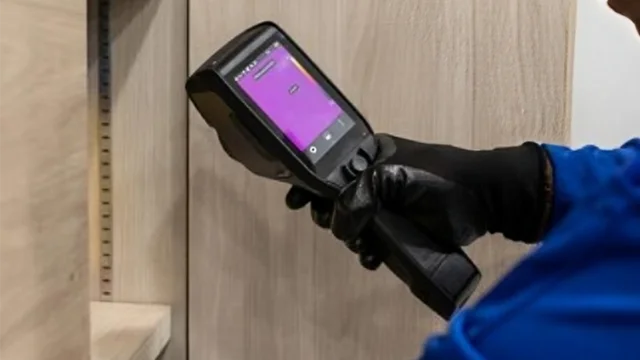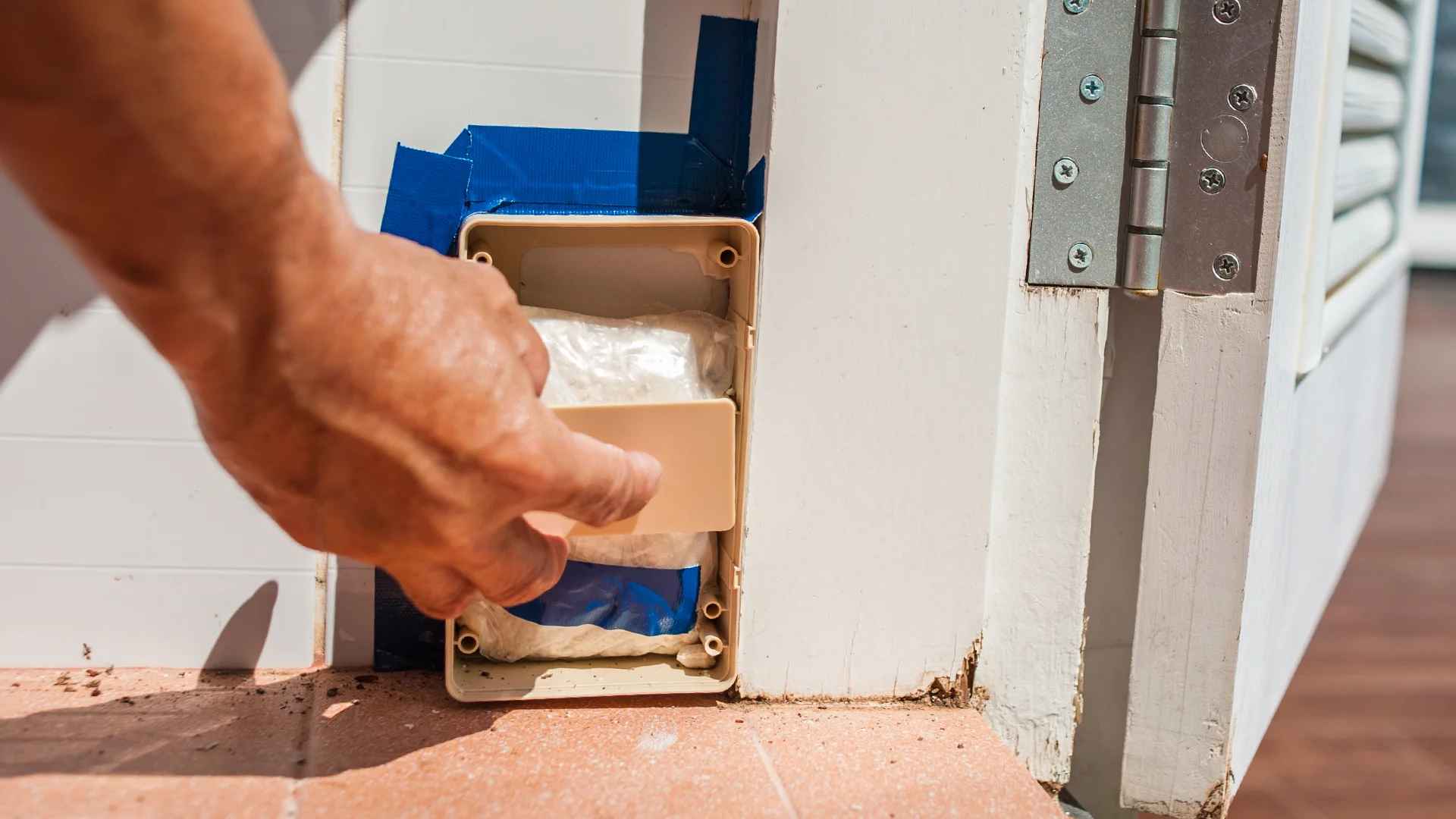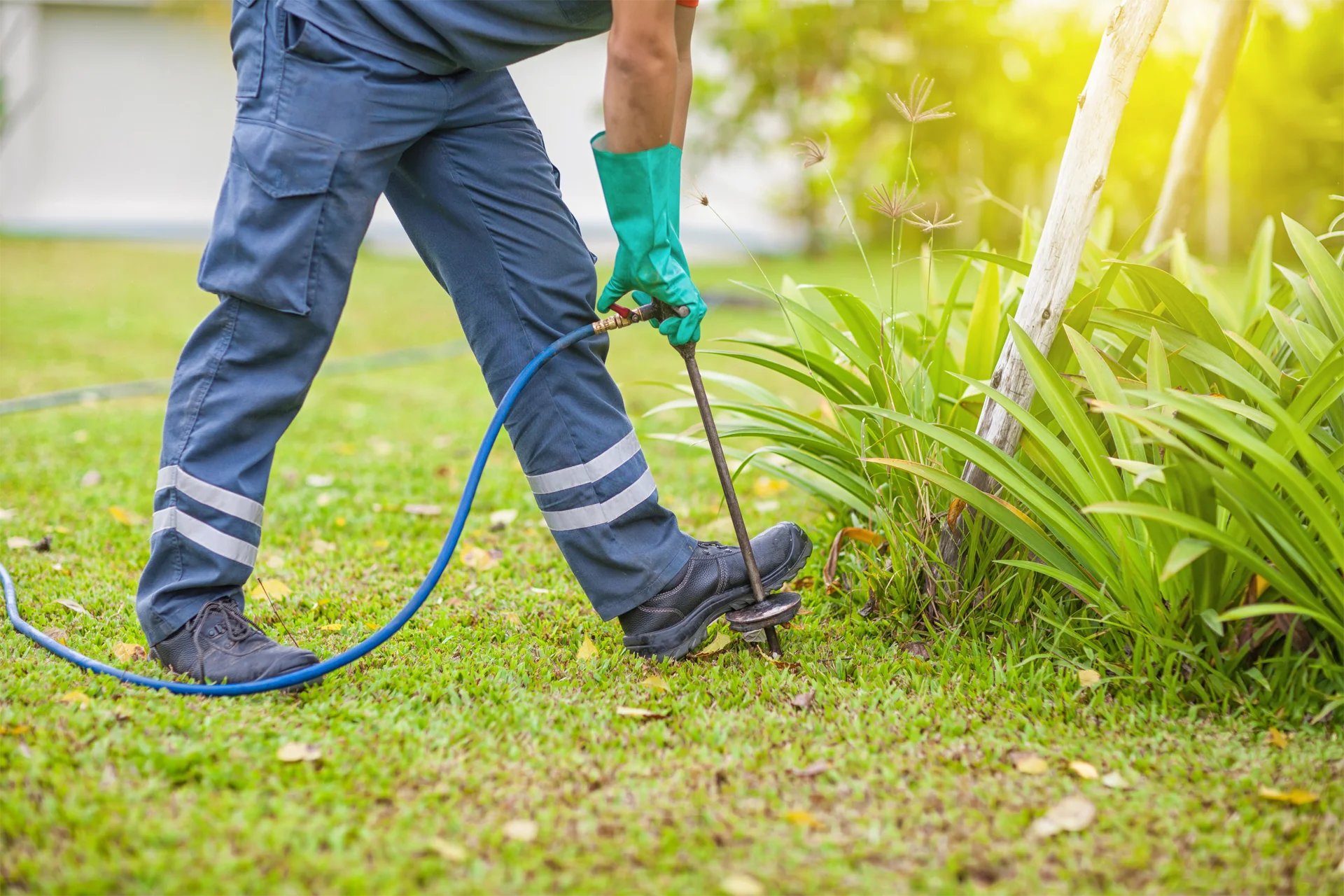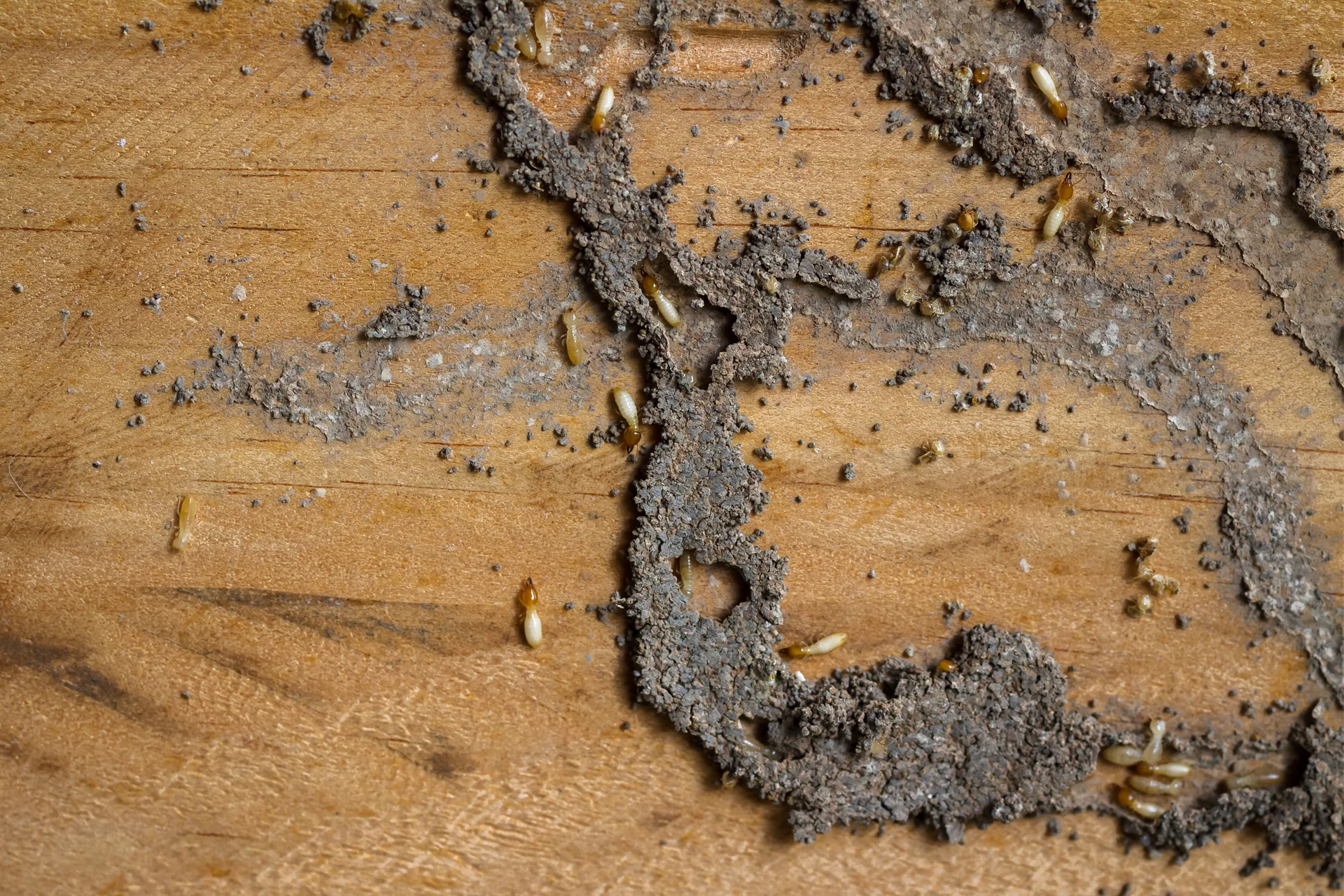Opting for low-cost termite extermination might seem like a bargain, but it’s often a short-term solution. These treatments rarely address the root of the problem, allowing termites to return and cause even greater damage. What starts as a “quick fix” can spiral into recurring treatments and costly repairs—adding up without you realizing it. DIY methods? Even riskier. Without professional expertise, you could worsen the infestation. Here’s why you should avoid cheap termite extermination:
(before GST)

Our experts use Thermal Imaging Camera to identify temperature anomalies within the operating range in the structure. If anomalies are detected, further analysis will be conducted using Termatrac T3i to confirm active infestations. Termatrac T3i detects the termite movement as it is equipped with termite detection radar.

Above-Ground Termite Baiting System (Premium)
Our termite control process begins with a detailed inspection conducted by certified pest control professionals. Using visual checks and termite detection tools, we identify active infestation zones and trace the movement patterns of subterranean termites. This step is crucial in developing a precise treatment strategy tailored to your property’s layout and risk level.
Once activity zones are confirmed, our team will deploy above-ground baiting stations at optimal locations based on foraging trails and termite behaviour. These placements are carefully calculated to ensure maximum exposure and transfer of the bait throughout the colony. Unlike one-size-fits-all treatments, Servcare specialists determine the ideal bait quantity, spacing, and configuration on-site for effective results.
Throughout the treatment cycle, our team conducts scheduled follow-ups every 2–3 weeks. We monitor termite activity levels, assess bait consumption, and adjust the strategy as needed to maintain efficacy. This hands-on approach allows us to respond to real-time changes in termite behaviour and ensure continuous progress toward colony elimination.
Servcare uses a premium termite baiting brand known for its fast-acting formulation—requiring only 6–8 weeks of feeding under normal conditions. This is significantly shorter than conventional brands, which may take up to 6 months. With the right placement and expertise, our specialists help you achieve faster and more reliable outcomes.

Servcare Services provides two cost-effective solutions that work as preventive strategies to protect buildings for up to five years:
Pre-construction soil treatment is a preventive termite control method applied before a building is constructed. This treatment involves applying liquid termiticides to the soil in key areas to create a chemical barrier, preventing subterranean termites from entering the structure. It is a widely used technique in new construction projects to protect buildings from future termite infestations.The treated soil absorbs the termiticide, creating a long-lasting chemical barrier for several years that kills termites upon contact.
Post-construction corrective soil treatment is a specialised termite control method used to protect existing buildings from subterranean termite infestations. This treatment involves applying liquid termiticides to the soil around and beneath an existing structure to create a chemical barrier. This prevents termites from entering, or eliminates an active infestation. It is commonly used when termites have already infested a building, or as a preventive measure in high-risk areas. Liquid termiticide is directly injected into drilled holes and trenches, or by utilising the rodding method on landscape soil. The chemical spreads into the soil, creating a protective barrier that either repels or kills termites upon contact.

Our experts use Thermal Imaging Camera to identify temperature anomalies within the operating range in the structure. If anomalies are detected, further analysis will be conducted using Termatrac T3i to confirm active infestations. Termatrac T3i detects the termite movement as it is equipped with termite detection radar.

Above-Ground Termite Baiting System (Premium)
Our termite control process begins with a detailed inspection conducted by certified pest control professionals. Using visual checks and termite detection tools, we identify active infestation zones and trace the movement patterns of subterranean termites. This step is crucial in developing a precise treatment strategy tailored to your property’s layout and risk level.
Once activity zones are confirmed, our team will deploy above-ground baiting stations at optimal locations based on foraging trails and termite behaviour. These placements are carefully calculated to ensure maximum exposure and transfer of the bait throughout the colony. Unlike one-size-fits-all treatments, Servcare specialists determine the ideal bait quantity, spacing, and configuration on-site for effective results.
Throughout the treatment cycle, our team conducts scheduled follow-ups every 2–3 weeks. We monitor termite activity levels, assess bait consumption, and adjust the strategy as needed to maintain efficacy. This hands-on approach allows us to respond to real-time changes in termite behaviour and ensure continuous progress toward colony elimination.
Servcare uses a premium termite baiting brand known for its fast-acting formulation—requiring only 6–8 weeks of feeding under normal conditions. This is significantly shorter than conventional brands, which may take up to 6 months. With the right placement and expertise, our specialists help you achieve faster and more reliable outcomes.

Servcare Services provides two cost-effective solutions that work as preventive strategies to protect buildings for up to five years:
Pre-construction soil treatment is a preventive termite control method applied before a building is constructed. This treatment involves applying liquid termiticides to the soil in key areas to create a chemical barrier, preventing subterranean termites from entering the structure. It is a widely used technique in new construction projects to protect buildings from future termite infestations.The treated soil absorbs the termiticide, creating a long-lasting chemical barrier for several years that kills termites upon contact.
Post-construction corrective soil treatment is a specialised termite control method used to protect existing buildings from subterranean termite infestations. This treatment involves applying liquid termiticides to the soil around and beneath an existing structure to create a chemical barrier. This prevents termites from entering, or eliminates an active infestation. It is commonly used when termites have already infested a building, or as a preventive measure in high-risk areas. Liquid termiticide is directly injected into drilled holes and trenches, or by utilising the rodding method on landscape soil. The chemical spreads into the soil, creating a protective barrier that either repels or kills termites upon contact.
Detecting termites early can prevent extensive damage. Common indicators include:
Protective tunnels on walls or wood surfaces
Sounds empty when tapped; may appear brittle
Termites knock on wood to communicate
Shed wings near windows or lights signal swarmers
Protective tunnels on walls or wood surfaces
Sounds empty when tapped; may appear brittle
Termites knock on wood to communicate
Shed wings near windows or lights signal swarmers
